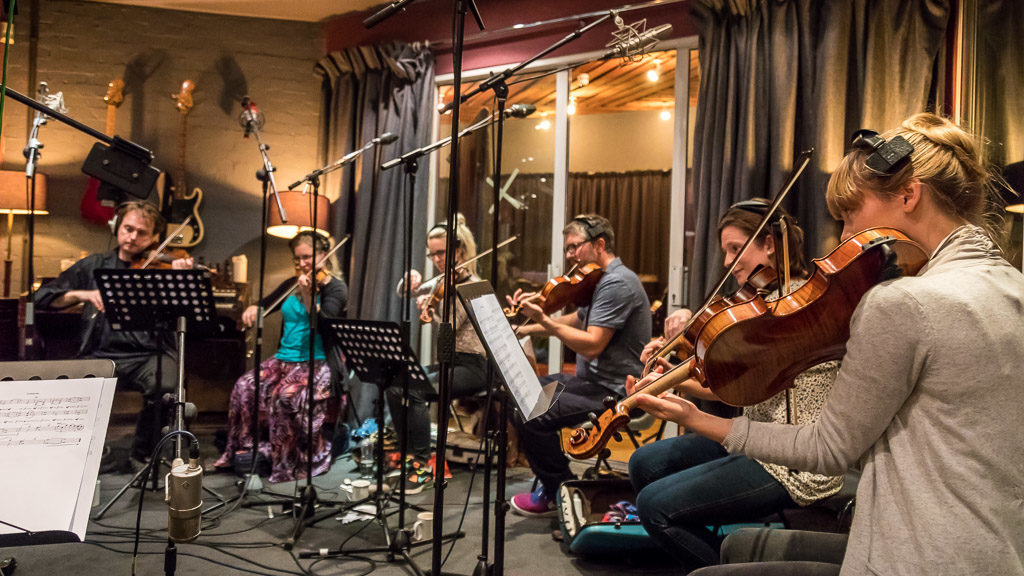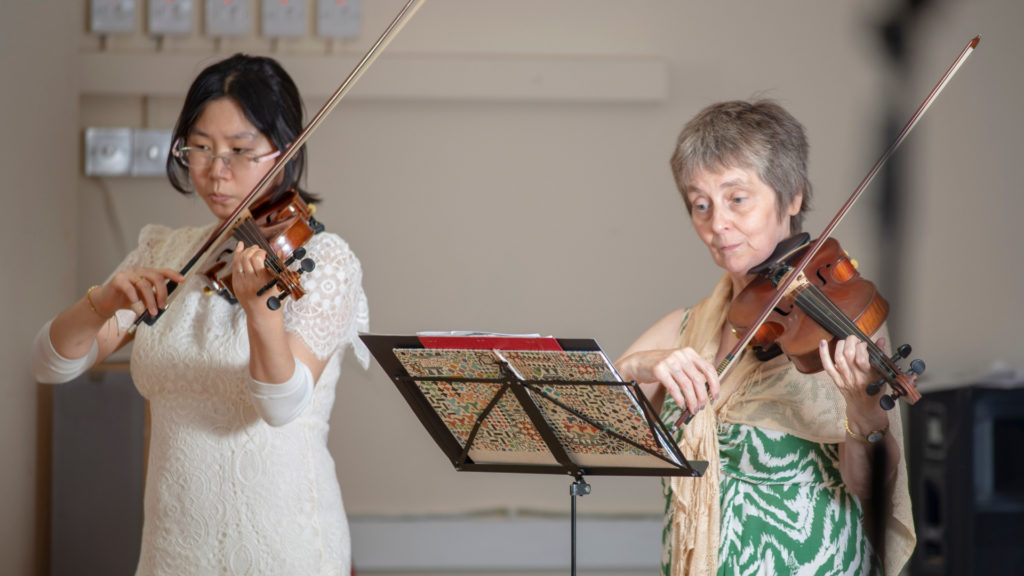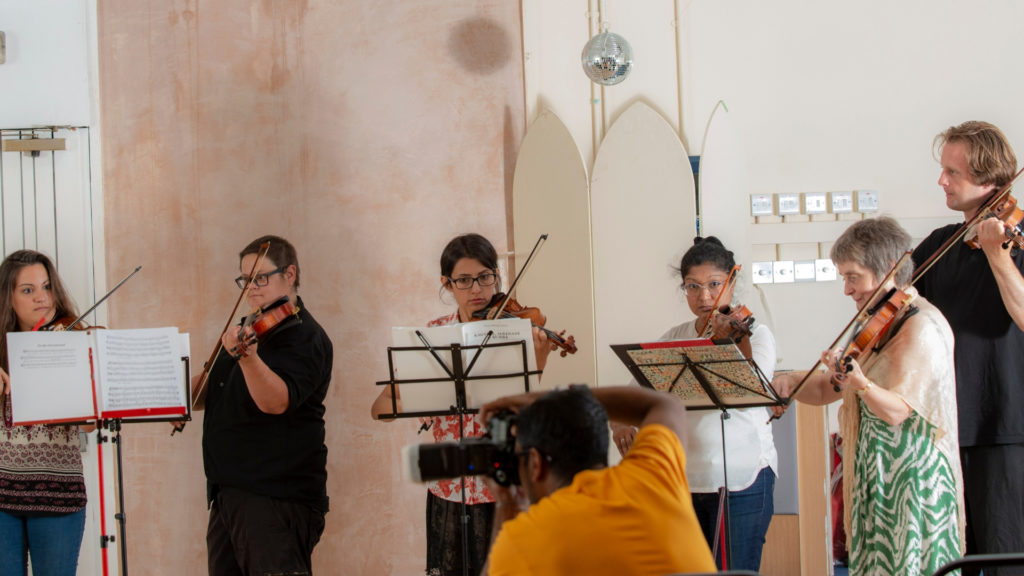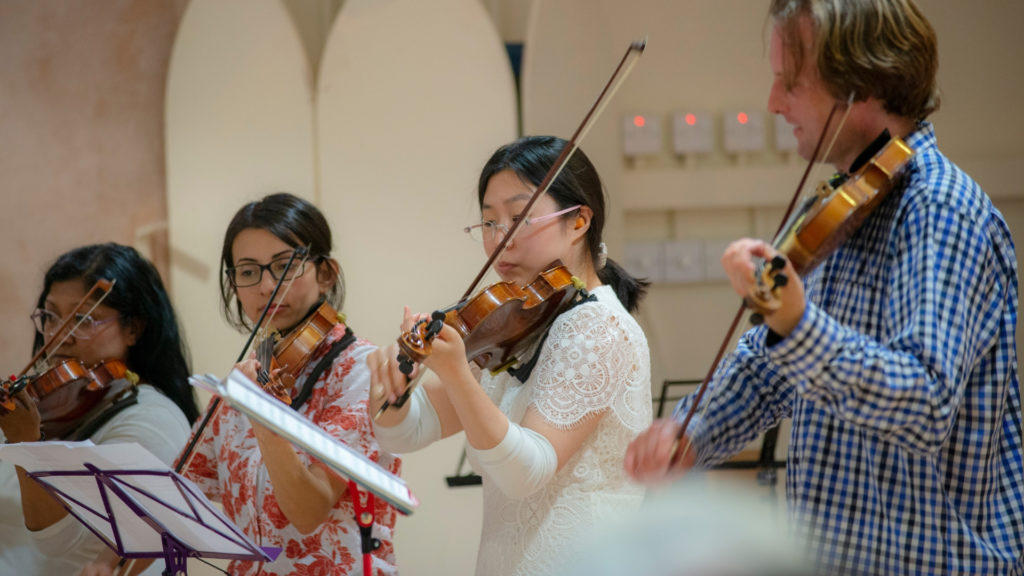'Sight-Reading' music is the process of playing something whilst you're looking at it for the very first time.
When you sight-read, you have to play the music as accurately and expressively as you can - even though you've never seen it before!
Sight-Reading Is Like Reading Aloud

Sight-reading music is a bit like reading aloud from a book.
Imagine you’re reading a story to somebody. You have to phrase the sentences in a way that makes sense, pronounce complicated words correctly, look ahead to see what's coming up next, and breathe in the right places.
But at least there’s no real ‘technique’ to worry about. People won't mind if you stumble over your words from time to time!
However, sight-reading music can be a bit more of a challenge. There's more to do physically when you're playing the violin, and there's a lot to take in from the music notation.
If you're playing at speed, there's not much time to do it, either!

Violinists often have to sight-read music when playing with other people, so you need to develop the skill to be able to play the right thing at the right moment, as other musicians may be depending on you.
For this, it's important to develop confidence in your sight-reading ability, just as much as in your violin technique.
If you're not a confident sight-reader, the sight of a new, unknown piece of music can make your brain freeze!
This happens because we feel overwhelmed by the amount of new information in front of us, so we forget about all the important technical and musical skills that we need to make the music come alive.
Other issues, such as dyslexia or poor eyesight can make you feel unenthusiastic about having to sightread, but...
Don't worry! ... whatever your age and experience level, you can always improve your sight-reading. You can learn to become a confident sight-reader.
In future features in this series, we'll be showing you practice techniques and approaches that will help you to practise your sight-reading... and to keep making it better and better!
Why Sight-Read?
Sight-reading is a really important skill, and the ability to sight-read fluently is a crucial part of your training as a violinist. It's useful for everyone - from beginners playing together for fun, right through to professional session musicians working in recording studios.

People often forget to practise sight-reading, or ignore it because they think it's just something you just have to do for violin exams! But it's a far more useful skill than that.
By learning to sight-read well, you can learn pieces more quickly, and you'll enjoy playing in orchestras and ensembles much more, because you'll have more confidence.
If you never include sight-reading exercises in your violin practice, the skill will remain undeveloped, even whilst other aspects of your playing get better. This isn't a good situation, because the longer you avoid learning the skill, the bigger an obstacle it will seem to be.
Learning new music becomes significantly easier when you can sight-read well. You can scope out a piece of violin music by sight-reading it through once, before you start to practise it. This will give you a sense of the overall structure and style, so you'll have a better idea of what you're aiming for when you start doing detailed technical work.

Highly developed sight-reading skills can also help to create opportunities for you to play in musical ensembles. It's much easier to get to know other musicians and to try out different types of ensemble playing when you can read through lots of music quickly!
Being good at sight-reading makes you a more versatile perfomer. You'll be able to assimilate new music and diverse styles very quickly, and play with minimal rehearsal time.
At our London school, we run events and ensemble sessions throughout the year, where violinists get together and play through new pieces of music.
Players develop a high level of fluency in their sight-reading, by building up their ensemble playing experience, and reading through as much new music as possible.

An Integral Skill For Good Violin Playing
A common problem with sight-reading is that people think of it as being separate from other musical skills, and from general musicianship. But if you don't approach sight-reading holistically as an integrated part of your approach to violin playing, it'll be much harder to play new music with other people.
But it doesn't need to be that way! Sight-reading is fundamentally just the skill of reading music, but applied to movement and sound in real time. It's a learnable skill, and the more you do it, the better you'll become.
Once you really understand the elements of sight-reading as a skill, and train yourself on each of those elements using good quality sight-reading exercises, you'll start to see massive progress in your ability to read music at sight.
And most importantly, you'll feel free to enjoy playing music - even if you're only seeing it for the very first time!

This is the first in a series of articles exploring Violin Sight-Reading... stay tuned to the ViolinSchool.com Blog for the rest of the series!
Please visit our sponsors:
London String School - Tuition for Adult Learners in London
MusicLand - Creative Music Products for Teachers and Learners
Please visit our sponsors:
FiddlerShop.com - Quality instruments at an affordable price
London String School - Tuition for Adult Learners in London
MusicLand - Creative Music Products for Teachers and Learners
